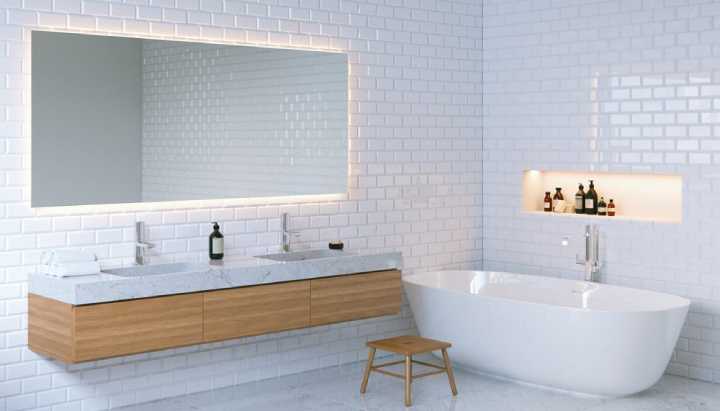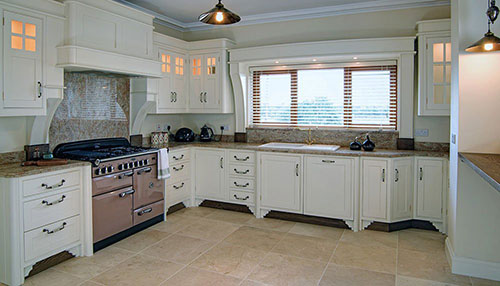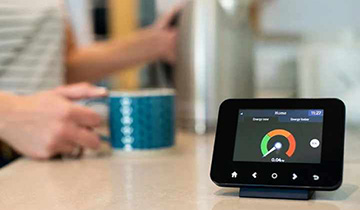6 min read
How do you make underfloor heating more efficient?
You’ve made the decision to install and use electric underfloor heating, you’re ready to make the purchase, but have you covered all bases,...

This year, Rated People launched their annual Home Improvement Trends Report: 2020. Over 1,000 homeowners responded to a 51-question survey and the results confirmed many things we know about the value underfloor heating brings to a home.
Unsurprisingly, the popularity of underfloor heating had risen by 600% in bathrooms, 400% in living rooms and 300% in kitchens. Underfloor heating also appeared in the top 10 home improvements which attract the most buyers.
So why is underfloor heating rising in popularity? We’ve outlined key reasons why buyers are willing to pay more with it installed.

Gone are the days where underfloor heating is just seen as a ‘nice-to-have’ because it was thought of as an expensive luxury. The evolution of technology and the growth of better energy efficient systems have made underfloor heating more accessible.
Electric underfloor heating, for example, can even be installed by a passionate DIYer if the installation is tested and connected by a qualified electrician. Even though underfloor heating is more prevalent in homes, it certainly hasn’t lost it’s ‘wow factor’ and continues to ooze that luxurious feel which many potential buyers will happily pay for.
Underfloor heating is exceptionally energy efficient and you won’t be fighting with family members over the warmest spot in the room because underfloor heating heats the whole floor with the heat being evenly distributed throughout the room. If you have radiators already installed, you may be able to relate to that.
When it comes to electric underfloor heating, there are additional factors to consider to make your underfloor heating system even more energy efficient. These are insulation and controllability.
By using the right insulation, it is possible to make your underfloor heating up to 50% more efficient. But why is this? Without insulation as part of the build-up, a proportion of the heat produced from the heating cable will be lost through the substrate. That means you end up paying more to heat the room to your desired temperature. By including insulation, the heat produced by the heating cable is reflected upwards which means your room reaches the desired temperature quicker and you aren’t wasting money on heat that is lost. If you are installing on a timber substrate, consider using coated insulation boards. If you are installing on concrete then uncoated insulation boards are what you need.
Controllability is the other key factor. Lot20 compliant thermostats come with all the features that you need to make controlling your underfloor heating simple. Even if you adjust the temperature of your room by -1oC, you could reduce your annual heating bill by up to £75 per year. An ideal way to help make your underfloor heating more energy efficient is to set up a heating schedule that is built around your lifestyle. This helps you to only heat the room when you need it. If you are always on the go, a smart thermostat would suit you as it allows you to adjust your heating from anywhere.
When giving a room a new lease of life, who enjoys trying to paint behind a radiator or having to take it off the wall to paint behind it? If we are all honest, nobody does. With underfloor heating, not only is this fiddly job a thing of the past, but you also have much more design freedom because you don’t have to design around radiators and furniture can be positioned exactly where you want it. Your room will be nice and toasty and your environment exactly how you want it.

That’s right! Underfloor heating can really benefit your health. If you are prone to dust or have a condition such as asthma, then underfloor heating could help. Dust mites are one of the root triggers of respiratory conditions.
Dust mites can be distributed in the air when we walk on carpets, vacuum and dust surfaces. Radiators don’t help either. Because radiators use convection currents to heat the room, dust mites get ‘picked up’ and spread throughout your home. Underfloor heating works differently. Using radiant heat, rooms are heated from the floor up which reduces the ‘travel rate’ of the dust mites in your home. Dust mites thrive in high moisture environments but installing underfloor heating reduces room moisture and that means the number of dust mites in your home will reduce and in many cases the reduction can be up to 80%!
Underfloor heating dries floors quicker which means less slipping when you get of the bath or shower. Also, because underfloor heating reduces moisture in the air, aches and pains caused by conditions like arthritis can be eased too.
Underfloor heating can provide peace of mind to a buyer who is looking for a property to just move into that requires little initial work and little maintenance. With underfloor heating there are no moving parts which means that an electric heating system rarely breaks down. There are no water-filled pipes so there is less risk of property damage from burst pipework. If the underfloor heating system has been installed correctly, you can just turn it on, sit back and enjoy the warmth. If the underfloor heating hasn’t been turned on for a while and you have any concerns, there are specialist companies that can come out and give the system a clean bill of health.
Every ThermoSphere electric underfloor heating system comes with a lifetime warranty and you can also contact our team with any questions about your underfloor heating system in your new property and we will happily answer any questions that you may have.

If you are viewing a property which has underfloor heating installed, take note of the floor finish that has been used in the installation. Good quality tile and stone floor tiles provide the best thermal conductivity and will heat up the room quicker. Hard timber floors also complement the underfloor heating system well. Not only are these floor finishes great for underfloor heating but they also look high end too which makes the property all the more desirable.
There is a big change happening in 2021 and it is all to do with SAP ratings. SAP is used to assess energy use and carbon emissions. Previously the CO2 emission factor for electricity was much greater than gas which meant that traditionally gas was the preferred choice. However, since the growth of the greener energy grid and advances in renewable energy sources, SAP has taken this into consideration and reduced the CO2 emission factor of electricity in the soon-to-be launched SAP 10 guidance. This means that electric heating is equally as green, if not greener, than gas. This makes electric heating a great alternative to the growing environmentally conscious homebuyer.
So, if you are thinking about gearing up your property or on the hunt for your next home, then hopefully this article provides you with some food for thoughts when it comes to underfloor heating.
If you have any questions, feel free to contact one of the ThermoSphere team.

6 min read
You’ve made the decision to install and use electric underfloor heating, you’re ready to make the purchase, but have you covered all bases,...

5 min read
With the cold weather just around the corner, many of us will be turning on the heating, monitoring the thermostat, looking at our smart meters and...

5 min read
‘What’s the best underfloor heating for vinyl floors?’ is not an uncommon question we get asked. Vinyl flooring is becoming a more popular floor...